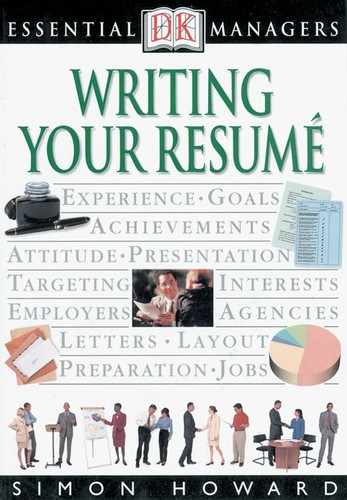Analyzing your Profile
By plotting out your responses to the questionnaire on the previous pages, you will gain a clear picture of your transferable skills. This will enable you to emphasize your strengths and play down – or overcome – your weaknesses.
Your completed chart will give you a clear indication of where your strengths and weaknesses lie. It can also help you make the most of your skills and deal with any areas that you feel need to be improved.Assessing skills

Creating your profile
To create your profile, photocopy the chart here or draw one up. Mark your answer between the numbers 1 and 4 in the first column according to your answers to the 16 questions listed here, then draw a line joining the marks. Look at the line; where it falls to the left it indicates your weaker tendencies, where it falls to the right it shows your stronger ones. In preparing your resumé, focus on your strengths, since it is these that will get you your next job. By gaining a better understanding of your skills, you can gauge how best they will work for you. You will also need to account for your weaknesses.
Understanding your weaknesses
There are two ways of dealing with your weaknesses: you can either live with them or you can overcome them. Your approach will depend on whether the skills are integral to the work you may be taking on. The likelihood is that a number of your perceived weaknesses are in areas in which a possible lack of expertise will not adversely affect your prospects, or they may indicate a dislike for some particular tasks. Those things that you do not enjoy and are not good at are probably best avoided. The skills that you do need to fulfill your career ambitions need to be tackled through formal training or personal development. If it will improve your chances of success, enroll in a course or read self-help books that cover the skills you need.
| 1 2 3 4 | Skills | Definition |
|---|---|---|
| 1 | Leadership | Motivating and empowering others |
| 2 | Planning and organizing | Organizing events and using time |
| 3 | Quality orientation | Ensuring standards are met |
| 4 | Persuasiveness | Influencing and convincing others |
| 5 | Technical competence | Possessing the required job skills |
| 6 | Problem-solving | Analyzing issues, finding solutions |
| 7 | Oral communication | Speaking clearly and fluently |
| 8 | Written communication | Writing clearly and concisely |
| 9 | Commercial awareness | Applying financial criteria to issues |
| 10 | Creativity and innovation | Originating ideas and approaches |
| 11 | Action orientation | Making decisions, taking action |
| 12 | Strategic thinking | Understanding the impact of events |
| 13 | Interpersonal sensitivity | Respecting others, interacting well |
| 14 | Flexibility | Adapting well to change |
| 15 | Resilience | Remaining calm under pressure |
| 16 | Personal motivation | Working hard for career goals |
